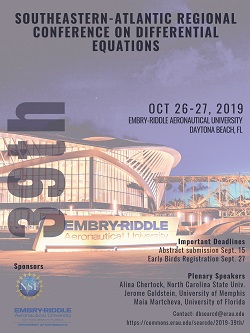Abstract
We consider a free boundary tumor growth model with a time delay in cell proliferation and study how time delay affects the stability and the size of the tumor. The model consists of a coupled system of an elliptic equation, a parabolic equation and an ordinary differential equation to describe the cell location under the presence of time delay, with the tumor boundary as a free boundary. A parameter $\mu$ in the model is proportional to the “aggressiveness” of the tumor. It is proved that there exists a unique classical radially symmetric stationary solution $(\sigma_*,p_*,R_*)$ which is stable for any $\mu>0$ with respect to all radially symmetric perturbations [S. Xu, Q. Zhou, and M. Bai, Qualitative analysis of a time-delayed free boundary problem for tumor growth under the action of external inhibitors]. However, under non-radially symmetric perturbations, we prove that there exists a critical number $\mu_*$ such that if $\mu\mu_*$ then the stationary solution is unstable. It is actually unrealistic to expect the problem to be stable for large tumor aggressiveness parameter, therefore our result is more reasonable. Furthermore, it is also proved by the authors that adding the time delay in the model would result in a larger tumor, and if $\mu$ is larger, then the time delay would have a greater impact on the size of the tumor.
The Impact of Time Delay in a Tumor Model
We consider a free boundary tumor growth model with a time delay in cell proliferation and study how time delay affects the stability and the size of the tumor. The model consists of a coupled system of an elliptic equation, a parabolic equation and an ordinary differential equation to describe the cell location under the presence of time delay, with the tumor boundary as a free boundary. A parameter $\mu$ in the model is proportional to the “aggressiveness” of the tumor. It is proved that there exists a unique classical radially symmetric stationary solution $(\sigma_*,p_*,R_*)$ which is stable for any $\mu>0$ with respect to all radially symmetric perturbations [S. Xu, Q. Zhou, and M. Bai, Qualitative analysis of a time-delayed free boundary problem for tumor growth under the action of external inhibitors]. However, under non-radially symmetric perturbations, we prove that there exists a critical number $\mu_*$ such that if $\mu\mu_*$ then the stationary solution is unstable. It is actually unrealistic to expect the problem to be stable for large tumor aggressiveness parameter, therefore our result is more reasonable. Furthermore, it is also proved by the authors that adding the time delay in the model would result in a larger tumor, and if $\mu$ is larger, then the time delay would have a greater impact on the size of the tumor.


Comments
View Parallel Session